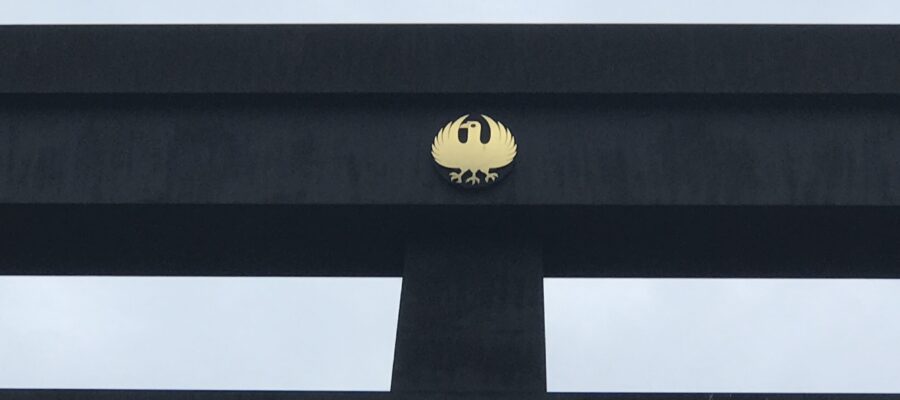大洪水で流された元々の社殿があった地
現在の熊野本宮大社を抜けて、次は、1889年に発生した明治の大洪水で多くの社殿が流出した、元々の熊野本宮大社の跡地へ向かいます。この地は、熊野川、音無川、岩田川が合流する大斎原と呼ばれる中州になります。かつては、この広大な約11,000坪の境内に、5棟12社の社殿、楼門、神楽殿や能舞台もあったそうです。

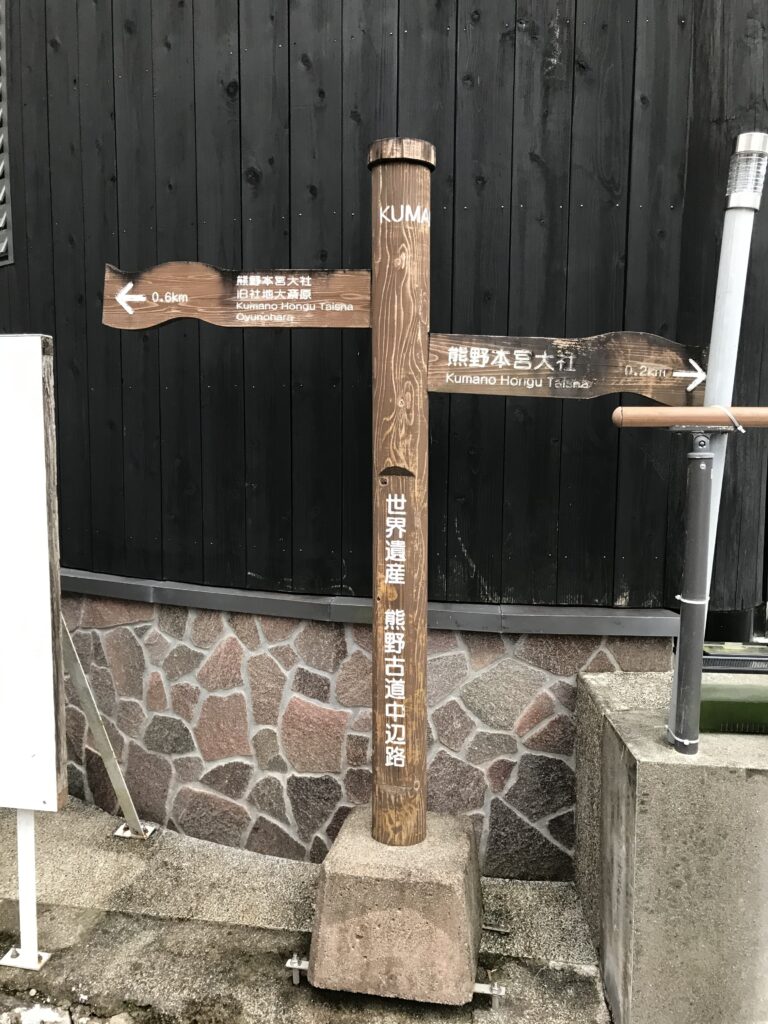
大斎原に続く敷石の参道に出ると、はるか先に黒くりっぱな大鳥居が目の前に現れます。遠くから見ても大きいですが、近づくにつれ、その大きさが迫力を増してきます。中辺路にある展望台からも厳かな姿を観ましたが、間近で見るとさらに神気を感じさせる姿をしています。
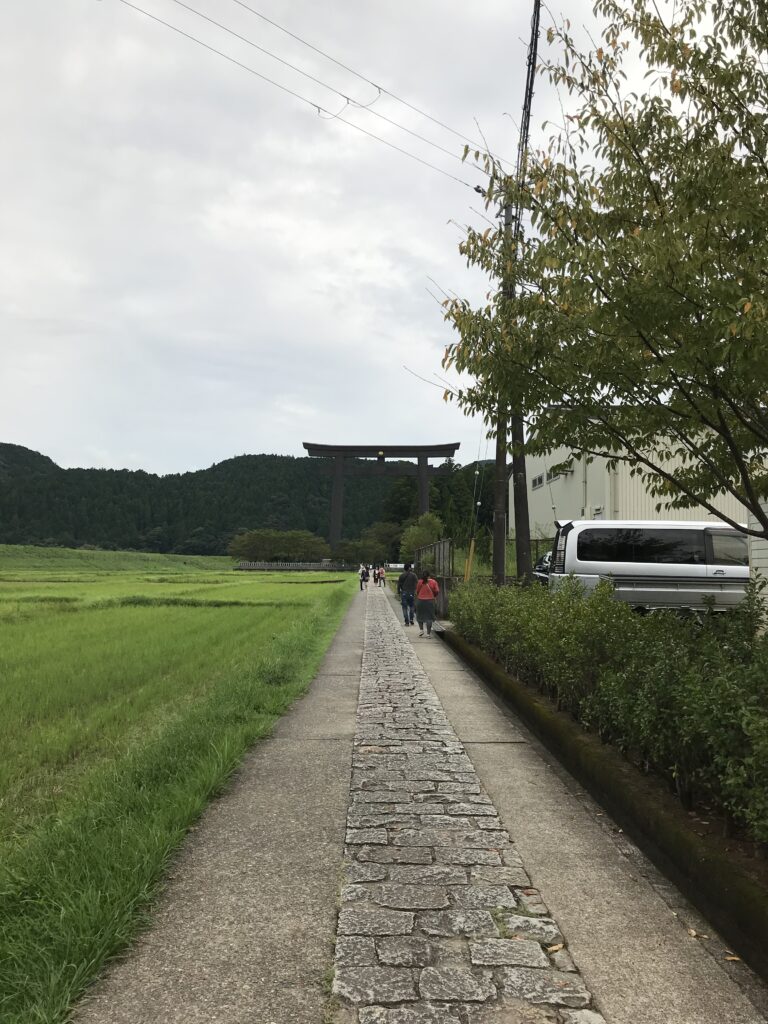
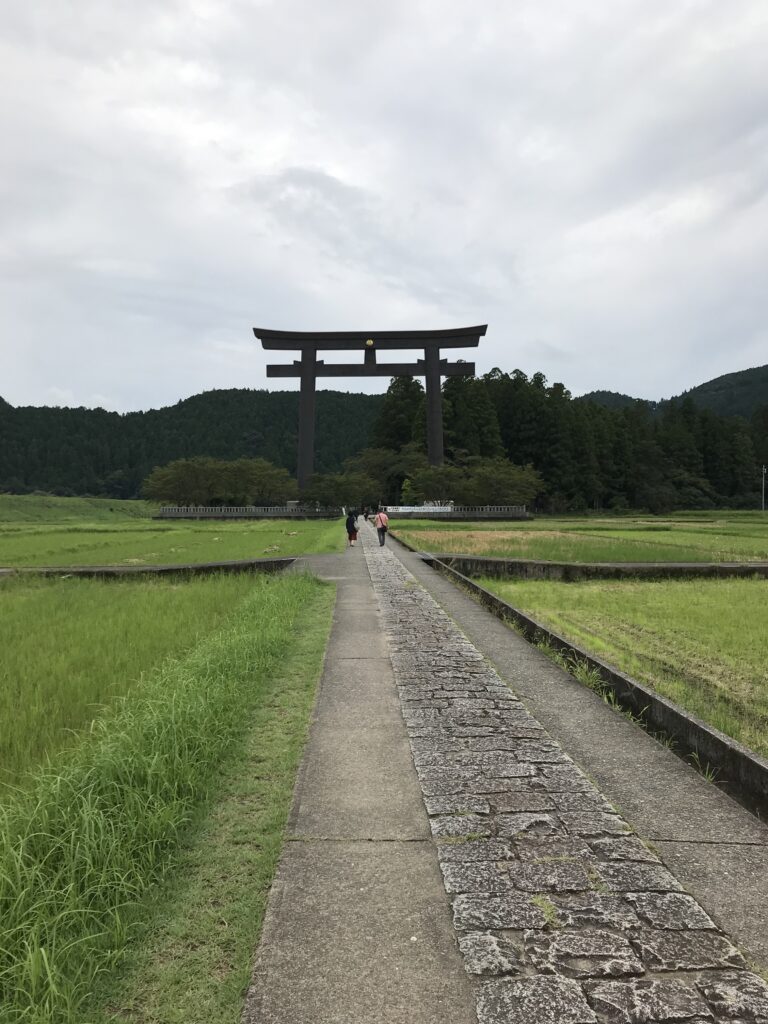
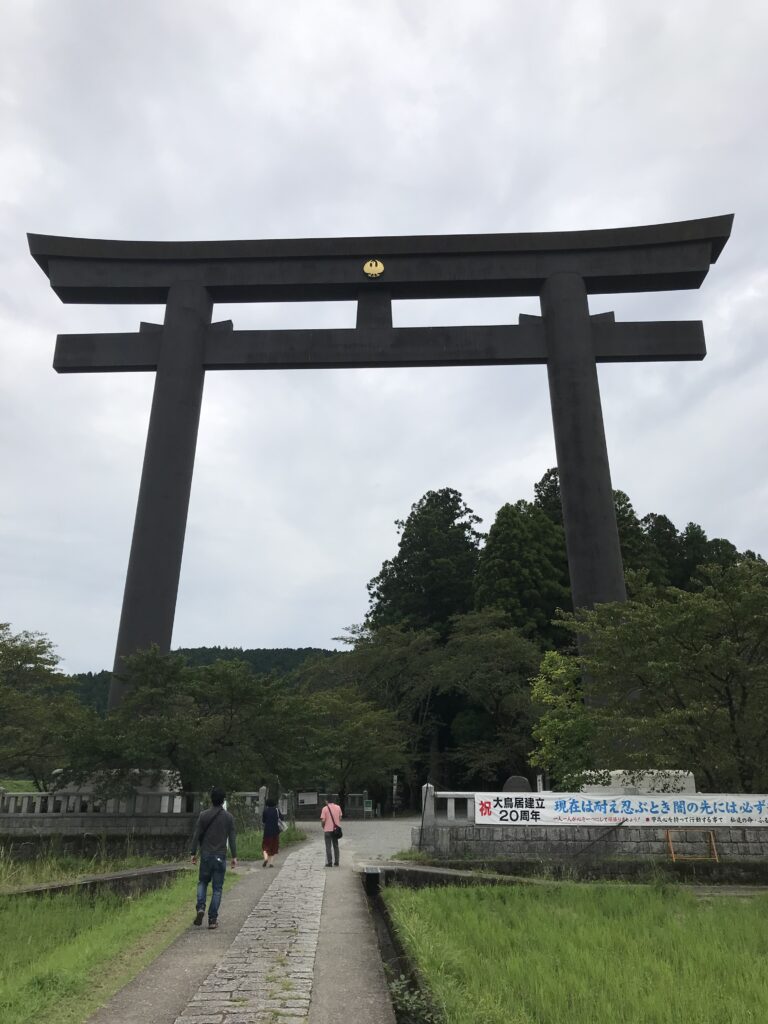
世界一大きい鳥居をくぐる
大鳥居の上層の笠木の中央に、金色の八咫烏が描かれています。いよいよ大鳥居をくぐります。それにしても高くて大きいので、何度も見上げてしまいます。ついに、日本一ということは世界一大きい鳥居をくぐりました。第2位の奈良の大神神社の大鳥居もくぐったので、世界一位、二位を制覇です。
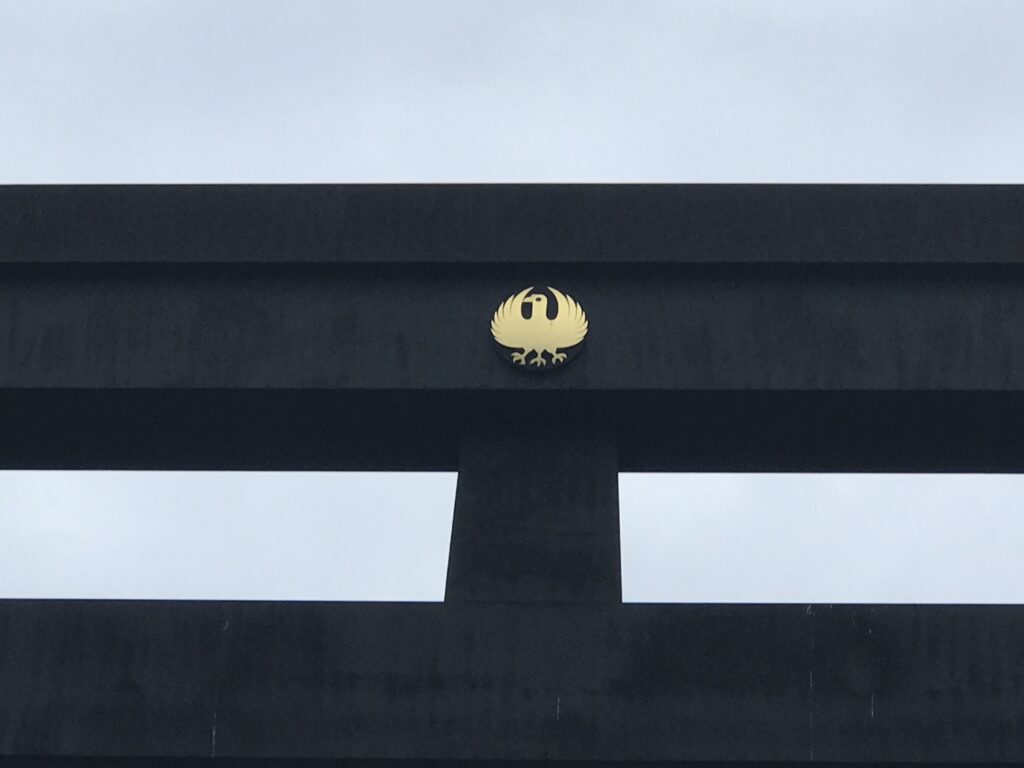
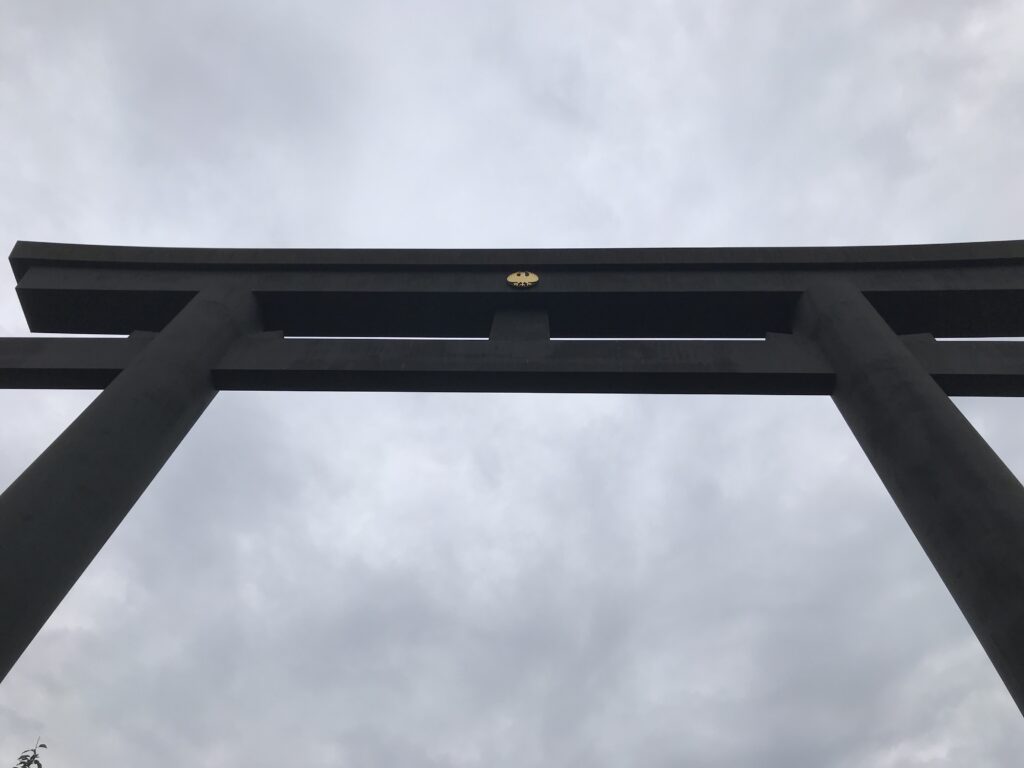
大鳥居からしばらく、両側を樹木で囲まれた参道を歩きます。夕暮れ時ということもあって、奥に進むにつれ、神々の世界に近づいている雰囲気を強く感じます。聞くところによると、昔は中州への橋がなかったため、参拝者は川を渡ることで、冷たい水に足をつけ、身を清めたそうです。
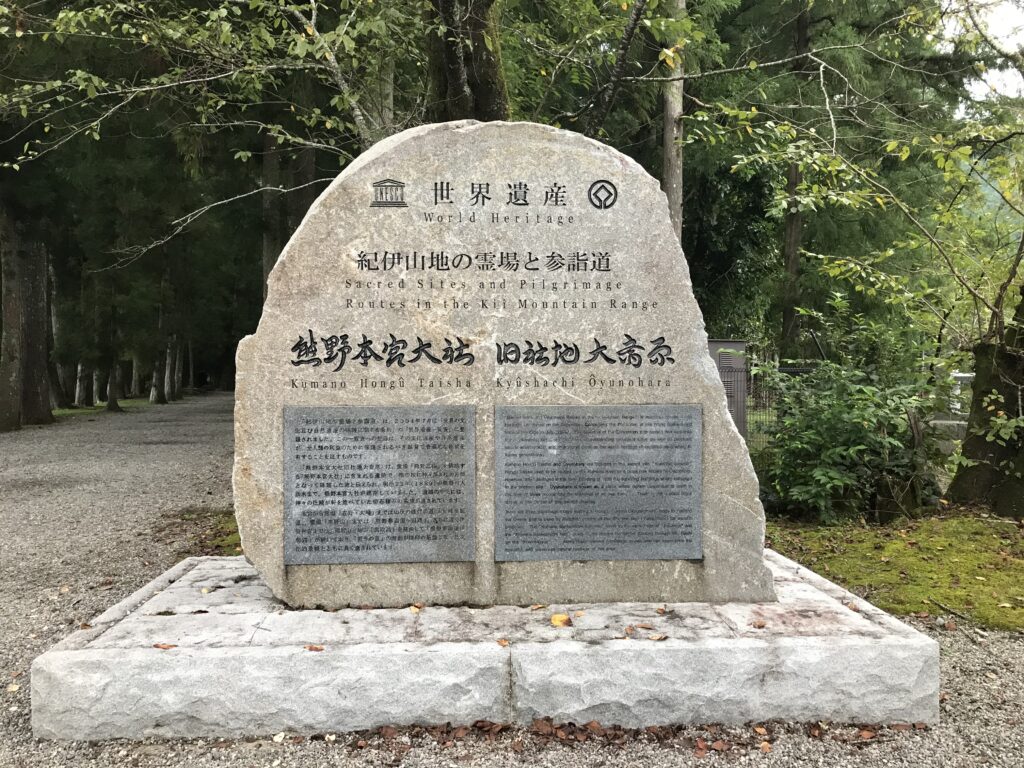
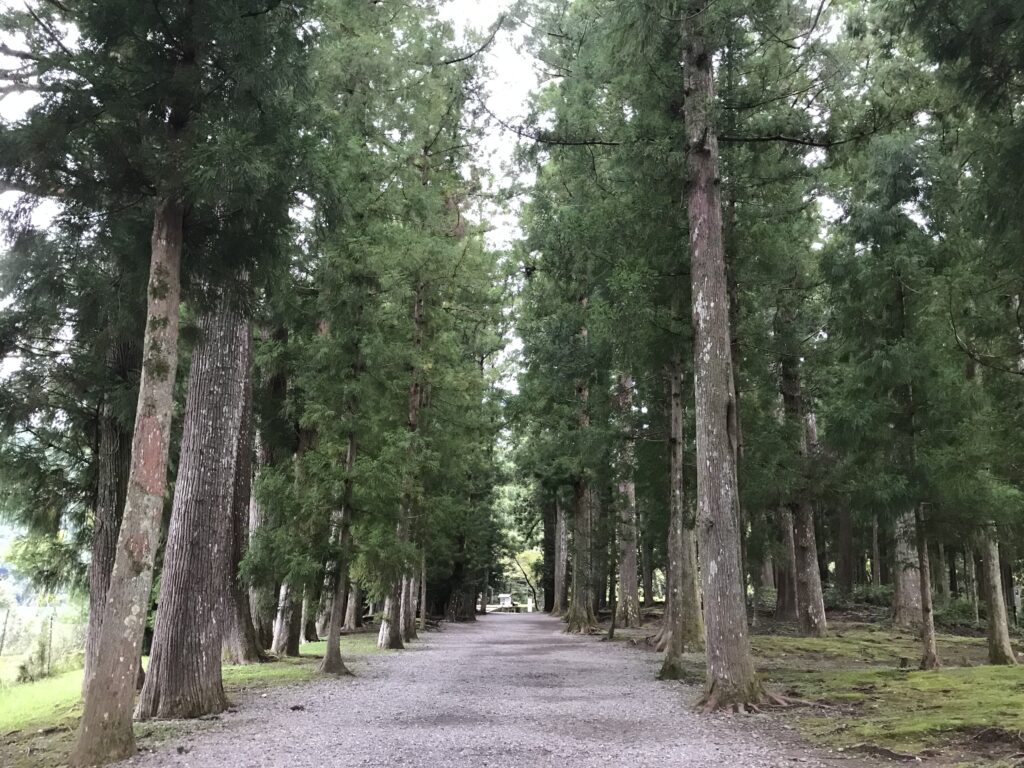
神々の気配を感じる場所
木立を抜けると、熊野の神が舞い降りた地と言われる大斎原に到着です。神妙な気持ちで歩き続けると、大洪水で流出した中四社、下四社を祀る、小さな石の祠が現れます。そこで、順番にお参りをしました。神聖な何かが宿る場所にふさわしい場所だと感じます。昔の人と同じ思いを共感できたのかも知れません。
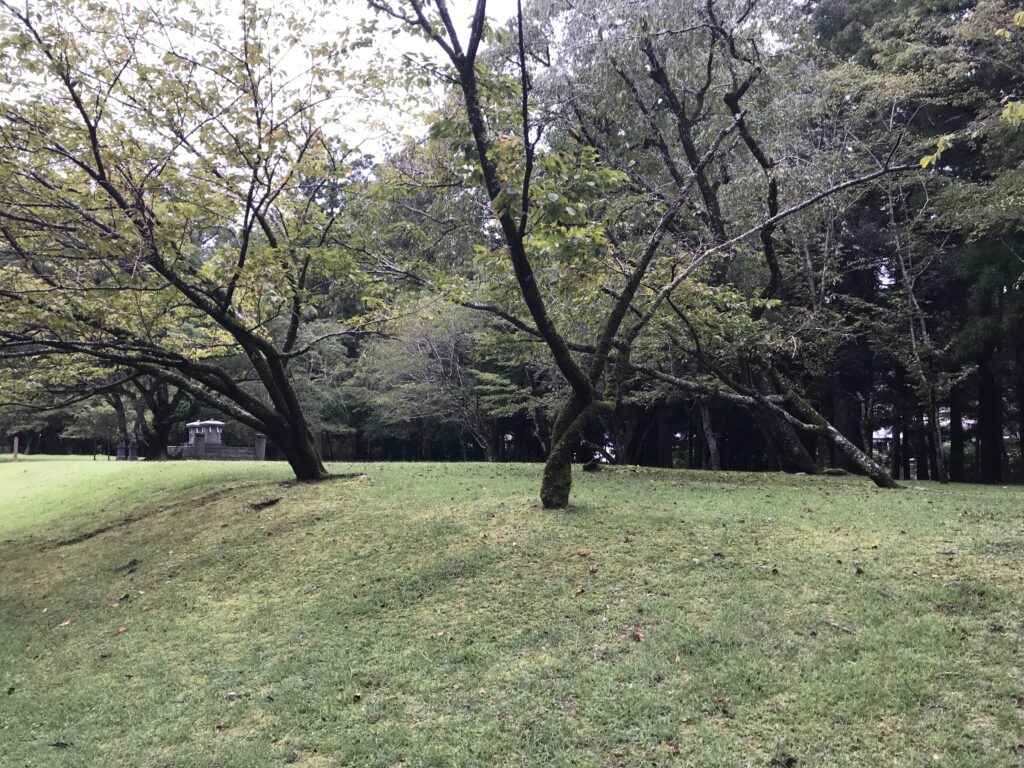
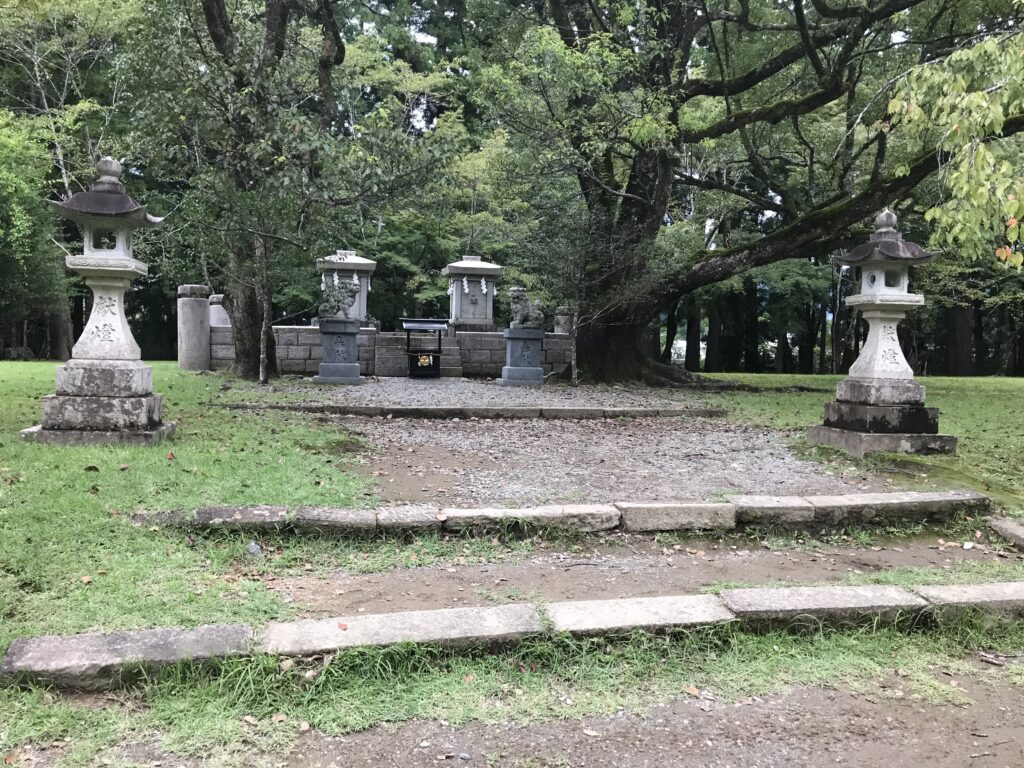
必勝祈願の記念碑
宿に向かう車に乗るため神域を出ますと、三本足の八咫烏を描いた記念碑がありました。八咫烏が導く勝利の聖地で、参詣者がそれぞれの勝利への想いを込める地となることを願い、この記念碑が建立されました。八咫烏は日本サッカー協会のシンボルマークにもなっていますから、サッカーの大きな大会の前には、サッカーの関係者が熊野に必勝祈願に来られるそうです。(つづく)
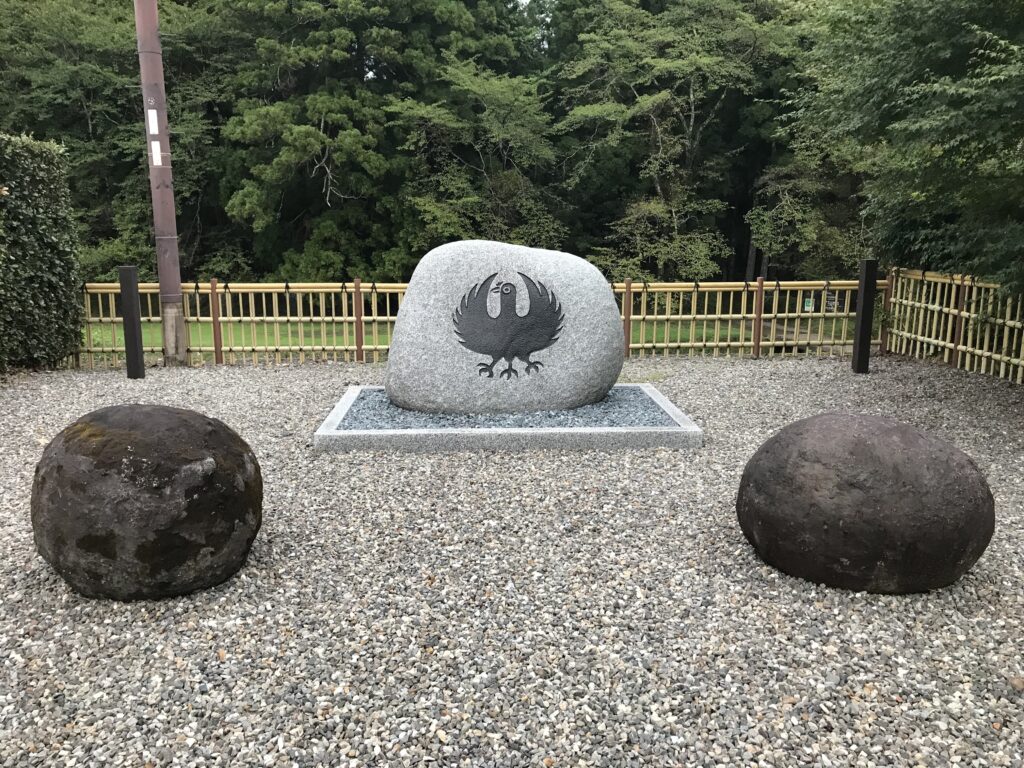
熊野古道について紹介している書籍
高木徳郎さんの「歴史の旅 熊野古道を歩く」にて、熊野古道が詳述されています。
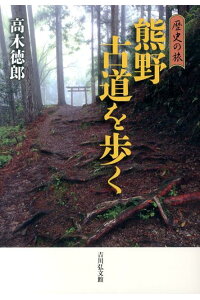
価格:2,750円
(2021/6/7 12:31時点)
感想(0件)
Kumano Kodo (Ancient Road) (5) Oyu-no-hara (English)
The site of the original shrine buildings that was washed away in the flood.
After passing the present Kumano Hongu Grand Shrine, I next head to the site of the original Kumano Hongu Grand Shrine, where many of the shrine buildings were washed away in the great Meiji period flood of 1889. This site is on a sandbar called Oyu-no-hara, where the Kumano, Otonashi, and Iwata Rivers meet. In the past, there were five buildings, 12 shrines, a tower gate, a kagura hall and a Noh stage in this vast precinct of about 11,000 tsubo (Unit of area in Japan: 1 unit is the space of 2 tatami mats).
As I stepped out onto the paving stone pathway leading to the Oyu-no-hara, I was greeted by the sight of the grand black torii gate. It looks huge from a distance, but as I got closer, its size became more and more impressive. I saw the austere figure from the observatory on Nakahechi Road, but it looked even more divine up close.
Passing through the World’s Largest Torii Gate
A golden Yatagarasu (crow) is painted in the center of the upper horizontal tree of the Otorii gate. Finally, I passed through the Otorii Gate. It was so tall and large that I kept looking up at it. Finally, I passed through the largest torii gate in Japan, which means the largest in the world. I also had passed through the second largest torii gate, the Omiwa Shrine in Nara, so I have conquered the first and second largest torii gates in the world.
From the Otorii gate, I walked along the approach to the shrine, which was surrounded by trees on both sides. It was dusk, and as I walked deeper into the shrine, I strongly felt that I was approaching the world of the gods. According to a report, in the old days, there was no bridge to Nakasu (island in the river), so worshippers used to cross the river to dip their feet in the cold water and purify themselves.
A place where you can feel the presence of the gods.
After passing through a grove of trees, I arrived at Oyu-no-hara, the place where the gods of Kumano are said to have descended. As I continued walking with a mysterious feeling, I came to a small stone shrine enshrining the middle four shrines and the lower four shrines that were washed away by the great flood. I paid my respects there in turn. I felt that this was an appropriate place for something sacred to dwell. Perhaps I could share the same feelings as the people of the past.
A monument to pray for victory
As I left the shrine area to catch a ride to the inn, I saw a monument depicting the three-legged Yatagarasu. This monument was erected in the hope that the Yatagarasu will lead us to the holy ground of victory, where visitors can put their own thoughts of victory. The Yatagarasu is also the symbol of the Japan Football Association, so it is said that soccer officials come to Kumano to pray for victory before major soccer tournaments. (To be continued)
Kumano Kodo (ancienne route) (5) Oyu-no-hara (Français)
Le site des bâtiments originaux du sanctuaire qui ont été emportés par l’inondation.
Après avoir passé l’actuel Grand sanctuaire de Kumano Hongu, je me dirige vers le site du Grand sanctuaire original de Kumano Hongu, où de nombreux bâtiments du sanctuaire ont été emportés par les eaux lors de la grande inondation de la période Meiji en 1889. Ce site se trouve sur un banc de sable appelé Oyu-no-hara, où les rivières Kumano, Otonashi et Iwata se rencontrent. Autrefois, il y avait cinq bâtiments, 12 sanctuaires, une tour-porte, une salle kagura et une scène nô dans cette vaste enceinte d’environ 11 000 tsubo (unité de surface au Japon : 1 unité est l’espace de 2 tatamis).
En m’engageant sur le chemin pavé qui mène à l’Oyu-no-hara, j’ai été accueilli par la vue de la grande porte torii noire. Il semble énorme de loin, mais à mesure que je m’approchais, sa taille devenait de plus en plus impressionnante. J’avais vu la silhouette austère depuis l’observatoire de la route de Nakahechi, mais elle semblait encore plus divine de près.
Passage de la plus grande porte Torii du monde
Un Yatagarasu (corbeau) doré est peint au centre de l’arbre horizontal supérieur de la porte Otorii. Enfin, j’ai franchi la porte Otorii. Elle était si haute et si grande que je n’arrêtais pas de la regarder. Enfin, j’ai franchi la plus grande porte torii du Japon, ce qui signifie la plus grande du monde. J’ai également franchi la deuxième plus grande porte en torii, le sanctuaire d’Omiwa à Nara, et j’ai donc conquis la première et la deuxième plus grande porte en torii du monde.
Depuis la porte Otorii, j’ai marché le long de l’approche du sanctuaire, qui était entouré d’arbres des deux côtés. C’était le crépuscule, et plus je m’enfonçais dans le sanctuaire, plus j’avais l’impression de m’approcher du monde des dieux. Selon un rapport, autrefois, il n’y avait pas de pont vers Nakasu (île dans la rivière), alors les fidèles traversaient la rivière pour tremper leurs pieds dans l’eau froide et se purifier.
Un endroit où l’on peut sentir la présence des dieux.
Après avoir traversé un bosquet d’arbres, je suis arrivé à Oyu-no-hara, l’endroit où les dieux de Kumano sont censés être descendus. Alors que je continuais à marcher avec un sentiment mystérieux, je suis arrivé à un petit sanctuaire en pierre où se trouvent les quatre sanctuaires du milieu et les quatre sanctuaires du bas qui ont été emportés par la grande inondation. J’y ai présenté mes respects à mon tour. J’ai senti que c’était un endroit approprié pour que quelque chose de sacré y réside. Peut-être pourrais-je partager les mêmes sentiments que les gens du passé.
Un monument pour prier pour la victoire
En quittant le sanctuaire pour me rendre à l’auberge, j’ai vu un monument représentant le Yatagarasu à trois jambes. Ce monument a été érigé dans l’espoir que le Yatagarasu nous conduise à la terre sainte de la victoire, où les visiteurs peuvent déposer leurs propres pensées de victoire. Le Yatagarasu est également le symbole de l’Association japonaise de football. On dit donc que les officiels du football viennent à Kumano pour prier pour la victoire avant les grands tournois de football. (A suivre)
